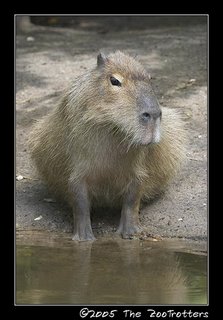
The Church has been around for a very, very long time in many, many places. Chances are that it would have accumulated a few crackpot ideas. One is that the beaver is actually a fish.
But why would the question even come up? Answer: the Lenten Fast.
Over the years, the fast, or self-denial of food, hass taken many forms. Says the Catholic Encyclopedia (www.newadvent.org
):"In some places eggs, milk, butter, cheese and fish are prohibited, while bread, cake, fruit, herbs and vegetables are allowed. In other places, milk, eggs, cheese, butter and fish are permitted, owing either to custom or to Indult."
Unfortunately, in many places the fast became a rather legalistic game in which people tried to parse out just exactly how much they could eat and still observe the fast. By people, of course, I mean laity and clergy, since both seemed in thrall to the game.
In places where fish was legit, the game went thus: let us redefine what the Church considers a fish! In pre-scientific times, this meant, not surprisingly, that whales and dolphins, though mammals, could be considered fish, and therefore eaten. Which explains, perhaps, my childhood love of "The Adventures of Flipper.
But what about other animals that -- though they seemed related to definite non-fish species, nevertheless lived in the water? How about (he asked) the beaver? According to an unconfirmed story, "in 1760, the College of Physicians and Faculty of Divinity in Paris cheered up hungry Catholics by allowing them to eat beaver during fast days. They said the beaver’s scaly tail classified it as a fish."
What, one might ask, does beaver tail tastes like? Chicken? Alas, no. It is said to taste like roast beef.
In the years after Columbus discovered the New World, the beaver question accompanied the Conquistadores to South America. Though South America had no beaver, it did have another animal that lived in the water and "was scaly": the capibara.

Sixteenth century missionaries in South America, hoping to keep capibara-loving natives in the Church, reported to the Pope that “there is an animal here that is scaly but also hairy, and spends time in the water but occasionally comes on land; can we classify it as a fish?” The Pope pondered this predicament and answered in the affirmative. To this day, 400 tons of capybara are eaten as fish during Lent, mostly in Venezuela.
And if your gastronome’s palate has yet to be set aquiver, consider another scrumptious morsel:
According to www.florilegium.org,
"Since meat was forbidden during Lent, fish became a primary source of protein. Some monks (Franciscian, I think) are credited with
domesticating rabbits, but you rarely find out WHY. Well, for what it's
worth, rabbit fetuses were not considered meat. Yes boys and girls, mom
rabbit was killed near-term, and during Lent the near-born bunnies were
food. ...I'm also guessing that this is when they began breeding for color and size
differences."
So, could it be that the bizarre Christian preoccupation with defining meat as fish gave rise to the monks who discovered genetic variability, laying the groundwork for the field of genetics?
Now wouldn’t that be a fish story worth telling!
______________________________________
Beaver illustration from Trees for Life: Restoring the Caledonian Forest, http://www.treesforlife.org.uk/newsletter/spring03.html
Capibara photo from The Zootrotters, http://photo.zootrotters.nl/displayimage.php?album=49&pos=4

No comments:
Post a Comment